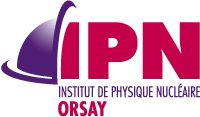3D and High Sensitivity Micrometric Mass Spectrometry Imaging
Imagerie par spectrométrie de masse micrométrique en 3D et haute sensibilité
Résumé
Mass spectrometry imaging has been shown of great interest in addressing biological questions by providing simultaneously chemical and spatial information. Particularly, TOF-SIMS is well recognized for its high spatial resolution (< 1 µm) which is essential in disclosing chemical information within a submicron area. The increasing use of TOF-SIMS in characterizing biological samples has greatly benefited from the introduction of new cluster ion sources. However, the ionization/desorption of the analytes under impacts of large clusters is still poorly understood. On the other hand, technically, current commercial TOF-SIMS instruments generally cannot provide sufficient mass resolution or mass accuracy for molecular identification, making analyses of complex biological systems especially challenging when no MS/MS fragmentation is available. Thus this thesis is aimed to get a better understanding of ion production under cluster impacts, to explore the MS/MS capability of the parallel imaging MS/MS Spectrometer (PHI nanoTOF II), as well as to apply TOF-SIMS to map important wood metabolites with high spatial resolution.In order to understand ion production under impacts of massive argon clusters, internal energy distributions of secondary ions were measured using survival yield method which involves the analyses of a series of benzylpyridinium ions. Investigation of various impacting conditions (energy, velocity, cluster size) suggested that velocity of the clusters play a major role in internal energy distribution and molecular fragmentation in the low energy per atom regime (E/n < 10 eV). The MS/MS fragmentation and parallel imaging capabilities of the newly designed PHI nanoTOF II spectrometer were evaluated by in situ MS/MS mapping of bioactive metabolites rubrynolide and rubrenolide in Amazonia wood species Sextonia rubra. Then this parallel imaging MS/MS technique was applied to perform in situ identification of related precursor metabolites in the same tree species. 2D and 3D TOF-SIMS imaging were carried out to target the plant cells that biosynthesize rubrynolide and rubrenolide. The results led to the proposal of a possible biosynthesis pathway of these two metabolites. In addition, to expand the application of TOF-SIMS imaging in wood chemistry analysis, radial distribution of wood extractives in the heartwood of European larch was also investigated.
L'imagerie par spectrométrie de masse est d’un grand intérêt pour aborder les questions biologiques en fournissant simultanément des informations chimiques et spatiales. En particulier, la spectrométrie de masse baptisée TOF-SIMS est bien reconnue par sa haute résolution spatiale (< 1 μm), qui est essentielle pour révéler l'information chimique dans une zone submicronique. L'emploi croissant de cette technique dans la caractérisation des échantillons biologiques a bénéficié du développement de nouvelles sources d'ions d’agrégats. Cependant, les processus d'ionisation/désorption des analytes sous les impacts d’agrégats lourds sont encore mal compris. D'un autre côté, techniquement, les instruments TOF-SIMS commerciaux actuels ne peuvent pas fournir une résolution en masse suffisante ni une précision sur la détermination de la masse pour l'identification moléculaire, ce qui rend les analyses de systèmes biologiques complexes très difficiles, et nécessite le recours à la fragmentation MS/MS. Cette thèse vise à mieux comprendre la production d'ions sous l’impact d’agrégats lourds et à explorer la capacité MS/MS du spectromètre de masse par temps de vol combiné à l’imagerie ionique en utilisant le spectromètre de masse PHI nanoTOF II. Ce dernier point a été réalisé en cartographiant en haute résolution spatiale des métabolites importants de bois. Pour comprendre la production d'ions sous les impacts d’agrégats d'argon massifs, l'énergie interne des ions secondaires a été mesurée en utilisant la mesure du taux de survie d'une série d'ions benzylpyridinium. L'étude de diverses conditions d'impact (énergie, vitesse, taille des agrégats) a montré que la vitesse joue le rôle majeur dans la distribution d'énergie interne et la fragmentation moléculaire dans le régime à faible énergie par atome (E/n < 10 eV).Les capacités de la fragmentation MS/MS et d'imagerie en parallèle du spectromètre PHI nanoTOF II nouvellement conçu ont été évalués par cartographie MS/MS in situ des métabolites bioactifs rubrynolide et rubrenolide dans les espèces amazoniennes de bois Sextonia rubra, ainsi qu’une identification in situ des métabolites précurseurs. L'imagerie TOF-SIMS 2D et 3D a permis de localiser les cellules où cette biosynthèse s’effectue. Les résultats ont conduit à la proposition d'une voie possible de biosynthèse des deux métabolites. Pour étendre l'application de l'imagerie TOF-SIMS dans l'analyse chimique du bois, la distribution radiale des extraits de bois dans le duramen du bois du mélèze européen a également été étudiée.
Origine : Version validée par le jury (STAR)
Loading...


